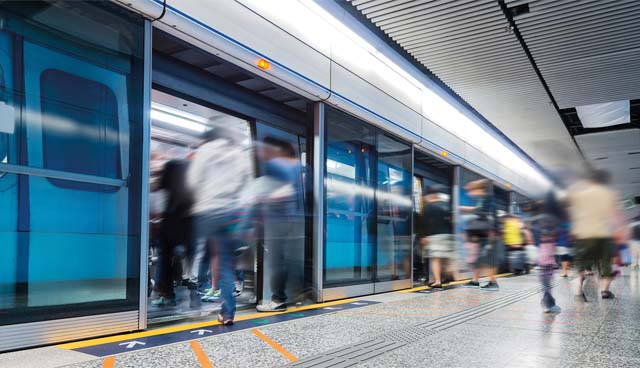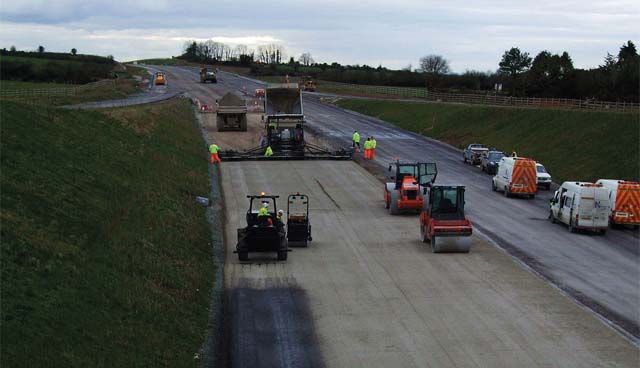Transport and the National Development Plan

Transport is the sector that will receive the second highest amount of gross voted capital allocation over the first five years of the newly revised National Development Plan (NDP), receiving €13 billion from 2021 to 2025. eolas examines the projects that this central finance will fund.
Of the five projects within the newly revised NDP stated as having an estimated cost category of F (over €1 billion), two fall within the transport sector: the programme for regional and local road protection and renewal and the delivery of the MetroLink mass rapid transit rail line.
The renewal and protection of regional and local roads is an annual programme of works whose estimated cost category of over €1 billion is given for the period 2021-2025. The NDP states that the highest priority for this investment is to “maintain the asset through the protection and renewal of the network of some 96,000km”. The investment is to be delivered through targeted Department of Transport funding to local authorities covering areas such as: restoration maintenance; restoration improvement; discretionary works such as repairs and routine maintenance; drainage works; climate adaptation and resilience works; safety related works; training; and winter maintenance.
In addition to maintenance works, the improvement of the local and regional road network is also said to be a priority of the NDP, with projects completed thus far including the Sallins Bypass, the Bettystown to Laytown regional road, the Portlaoise Southern Distributor Road and the Daingean Uí Chúis Relief Road. The Carrigaline Western Relief Road and the Coonagh to Knockalisheen project are currently under construction, while construction is due to begin on a number of projects such as the Tralee Northern Relief Road, the Shannon Crossing/Killaloe Bypass and the Athy Southern Distributor Road.

The National Roads Programme contains 39 road-building projects, some of which are currently under construction, some still awaiting further approvals. These include projects the length and width of the State such as the N56 from An Clochán Liath to Glenties, the N22 from Baile Bhúirne to Macroom, the M20 Cork to Limerick, the N6 Galway City Ring Road, the N4 Mullingar to Longford, the M4 Leixlip to Maynooth, the M11 capacity enhancement and the N11/N25 Oilgate to Rosslare Harbour.
The second of the category F transport projects, the MetroLink, is less clear in the plans included in the NDP. Its current status is given as being in the preliminary business case, with an estimated completion date simply left as TBC, meaning that its completion before 2030 seemed unlikely upon the publication of the new NDP, a feeling that was then confirmed by the publication of the National Transport Authority’s (NTA) draft strategy in November 2021. The project, whose cost estimates are now as high as €10 billion, is not set to be complete until at least 2035 “at best” according to Fianna Fáil TD Paul McAuliffe.
The NDP states that once completed, the MetroLink “will provide a sustainable, safe, efficient, integrated and accessible public transport service between Swords, Dublin Airport and Dublin City Centre” and that the project will “support approximately 8,000 direct construction jobs” and “carry around 53 million passengers in its opening year and create new connections between 127 schools, three third-level institutions and five hospitals”.
In related commuter rail plans, the plan’s investment in public transport includes the Cork Commuter Rail Programme, which will run from Mallow to Midleton and Cobh, targeting a 10-minute all-day frequency on electrified rail services. Phase one of the project is due to be completed in 2026 and is due to cost €185 million to “address the existing bottleneck in the city centre by enabling the creating of a suburban rail network”. Phase two of the programme is due to commence this year with early development, with delivery scheduled for the “latter period” of the NDP, i.e., post-2026.
MetroLink, the cost estimates of which are now as high as €10 billion is not set to be complete until at least 2035.
Further regional city commuter rail programmes are planned for Galway and Limerick, with “significant track and station works proposed for Oranmore and Athenry as well as the development of a new Limerick commuter rail network”. Major upgrade works over the lifetime of the NDP will also take place in Ceannt and Colbert stations, along with the building of a new train station and transport hub in Waterford.
From a sustainability point of view, one of the more notable transport projects within the NDP is the ongoing implementation of greener and cleaner bus fleets, which began rollout in 2021 and is due to last until 2025, with an estimate cost of €500 million-€1 billion. The NDP states that the NTA has “commenced the transition of the urban PSO bus fleet from diesel only vehicles to lower emission vehicles”.
Actions taken since July 2021 include: ordering 280 hybrid electric buses, 89 of which were in service at the time of the NDP’s publication; procurement of a framework for the delivery of up to 200 single deck electric buses with the intention of converting Athlone’s entire urban bus fleet to electric by Q2 2022; the delivery of a framework for up to 800 double deck electric buses, which are to enter operation in 2023; and the procurement of three hydrogen fuel cell double deck buses to be used in a hydrogen pilot. By 2025, it is “expected that over 50 per cent of the urban PSO bus fleet will be converted from diesel to low and zero emission vehicles, with 30 per cent of the bus fleet being zero emission”.
Indeed, the transport plans within the NDP will play a significant role in Ireland’s decarbonisation, with every major programme other than the National Roads Programme (given a C) given a climate and environmental assessment grade of A, meaning that they are “likely to have, on balance, a favourable impact on climate and environmental outcomes”.





